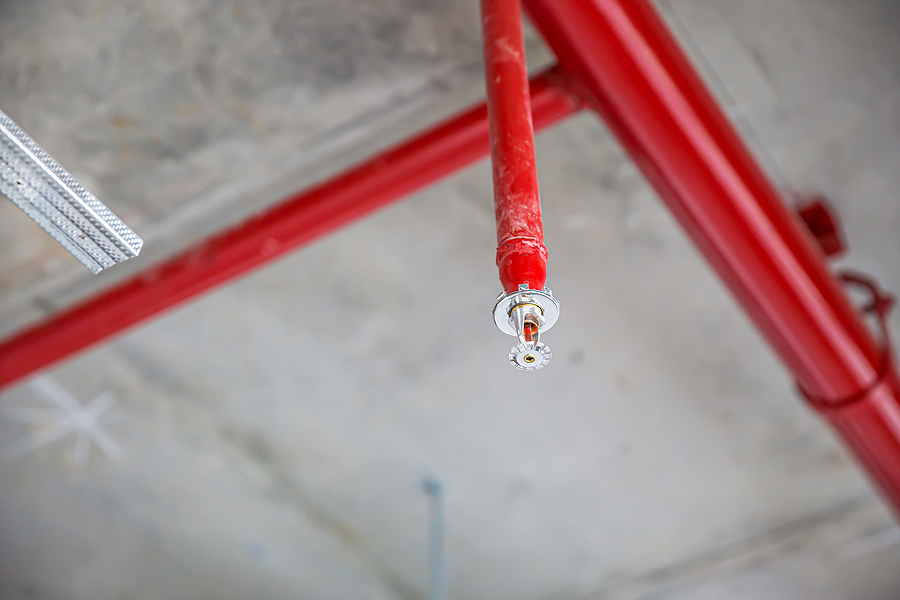A sprinkler system installed in a New Mexico commercial buildings typically gets its water supply from the city water main adjacent to the building. This supplies the building’s water requirements, including those for fighting fires. In most cases, the owner or manager of the building will be the one to contract with a company to feed the system by tapping into the primary and running piping underground.
This entire supply of sprinkler water originates from the same municipal source that satisfies the building’s other water requirements, such as those of the commodes, sinks, and drinking fountains.
What exactly is the backflow?
Backflow is the unintended movement of water through the plumbing system of a building in the opposite direction from which it is intended to flow. It is risky because water allowed to sit around without being used can cause contamination in plumbing systems and pollute the main water supply for the city.
The American Water Works Association reports that problems with backflow occur in five percent of all homes equipped with backflow sensing systems. These issues are even more likely to take place in commercial structures. According to a report published by the EPA, backflow incidents cost an average of $18,000 each and took nearly 450 hours to fix. In addition, these issues can be a costly hassle.
What makes backflow in sprinkler systems particularly hazardous is the question?
Because a large volume of water in a building’s sprinkler system does not move unless it is flowing during a sprinkler test, a fire activates it, or a sprinkler line breaks, backflow in sprinkler systems can be a severe problem. This is because a large volume of water does not move when it sits in a building’s sprinkler system. Because of this, the water has the potential to become stagnant, and the officials responsible for public safety do not want it to flow back into the water main.
For instance, if there were no mechanism to prevent it, gravity would quickly push stale water sitting in the sprinkler system of a 10-story building back into the water supply, which could lead to significant problems.
Because of this, it is necessary to install a backflow preventer in homes, offices, and other types of buildings with sprinkler systems.
What exactly is a backflow preventer, and why do I need to have one installed in my home?
A backflow preventer is a device that is installed in a sprinkler system to prevent water from flowing backward from the water main into the sprinkler system. This ensures that water can only move in one direction through the sprinkler system.
It functions similarly to a hose bib on your garden hose, and in fact, the nozzle features a little backflow preventer that directs water to spray out the sides rather than shoot back up into the source of the water supply. Utility departments in commercial buildings have a tool at their disposal called a backflow preventer, which helps them keep the building’s water supply clean and risk-free.
What kind of inspection and maintenance are backflow prevention systems obliged to have?
Statutes in Florida demand that backflow preventers be subjected to annual inspections and tests by a licensed fire sprinkler inspector who is also certified for testing backflow prevention.
After certification from a professional inspector, your backflow prevention system must be approved by the water company or public works department serving your community.
Why is it critical that I get my system that prevents backflow tested (and fixed, if necessary)?
The state of Florida requires its residents to do so on an annual basis. It is not only against the law to fail to have your backflow prevention system inspected, certified, and serviced; it also puts you and your neighbors at significant risk for water contamination.
Suppose the backflow preventer is not functioning correctly, or you have not obtained annual inspection and maintenance. In that case, the utility department of your specific municipality may turn off the entire water supply to your building or just the domestic water supply (everything else except the sprinkler systems). This may occur if you have failed to obtain annual inspection and maintenance. This indicates that none of the toilets, sinks, or showers will be functioning; however, the sprinklers will continue to work typically to protect you in the event of a fire.
Call the professionals at Brazas Fire at 505-899-8999 or reach us through our online contact form if you have questions regarding backflow, need to obtain your yearly inspection, or feel there may be a problem with your backflow preventer or other components of your building’s sprinkler system.
